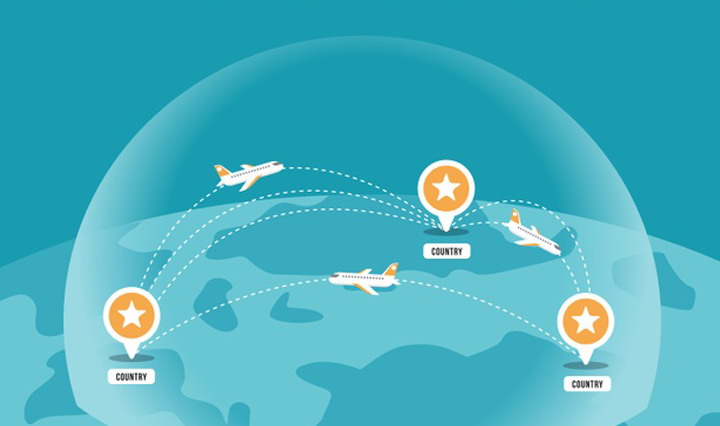Travel bubbles, also known as travel corridors and corona corridors, are basically an exclusive alliance between adjacent or surrounding countries that have shown significant success in controlling and combating the COVID-19 pandemic within their respective borders.
These countries then go on to re-establish relations between them by opening up borders and allowing citizens to travel freely within the region without having to go through quarantine on arrival.
The spread of the word was driven by three the Baltic States, namely Estonia, Latvia, and Lithuania when they established a trilateral alliance providing citizens of those countries with access to the territories of the Member States. Eventually, this free passage can be referred to as a travel bubble.
The safe bubble is not limited exclusively to tourism but helps the three Baltic countries to rekindle trade ties and to revive other sectors as well.
The chances of travelers spreading or catching the virus inside the travel bubble are highly low due to the degree of success demonstrated by the countries involved in the management of the viral outbreak.
On the other hand, anyone looking to enter the travel bubble from outside must undergo stringent protective steps, including 14-day isolation, an official declaration confirming that they have not been contaminated with coronavirus and have not come into contact with someone who has.
The purpose of Travel Bubble arrangements is to facilitate the reopening of as many bilateral travel markets as possible, based on the equalization of infection risk between origin and destination countries.
Travel Bubbles offer a flexible solution with public health risk mitigation measures adapted to suit the specific circumstances of the bilateral country pair or regional grouping.
India international flights: India has bilateral air bubble agreements with 18 countries. Under these arrangements, two countries agree to operate direct passenger flights on both sides in order to operate regular flights between them until things have returned to normal after a pandemic.
The list of countries with travel bubbles in India includes the United States, United Kingdom, Germany, France, the UAE, Maldives, Canada, Japan, Bahrain, Afghanistan, Nigeria, Qatar, Iraq, Oman, Bhutan, Kenya, Bangladesh, and Ukraine.
Does this mean individuals can make a trip to these nations?
Truly, individuals would now be able to head out to all the nations with which the Indian government has gone into an International Air Bubble arrangement.
It is to be dealt with that the worldwide flights have still not begun generally and flights are utilizing simply because of the arrangement, and that too in a restricted limit. In any case, it is changing and numerous nations are gradually reporting trips to and from their countries.
Invent of Travel Bubble
The emergence of coronavirus has brought about an unprecedented and multi-faceted crisis, with global shares hitting the floors, unemployment rising, and oil prices plummeting.
With travelers canceling their holidays and business trips due to flights being grounded and borders being closed, the travel industry is among the hardest hit by the onslaught and is now faced with almost insurmountable odds.
Tourism accounts for a substantial percentage of any country’s annual GDP, and the loss of such a significant portion of the pie has proven to be very detrimental.
As a result, governments around the world are trying to find ingenious ways to recover some of the inbound cash flows associated with international tourism and transport, which in turn takes us to a little bit of a so-called ‘travel bubble.’
Key Takeaways
While travel bubbles are far from the optimal solution, they are undeniably a step in the right direction. When more and more of these sky bridges spring up, we can be sure that countries around the world are doing a better job of flattening the curve.
For now, these travel bubbles have proved to be a blessing to those trying to get their economies back on track. Let us take comfort in the fact that travel bubbles are a telling indication that we can soon be able to explore the world again.


